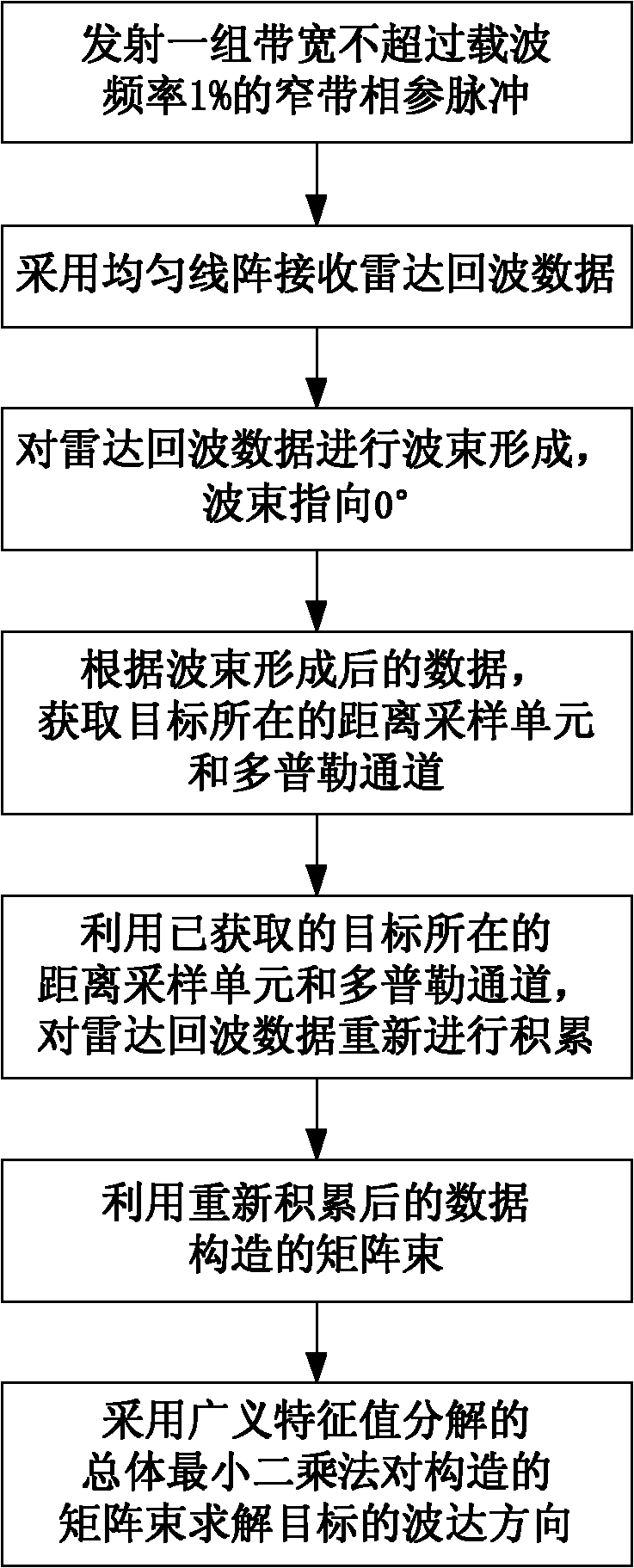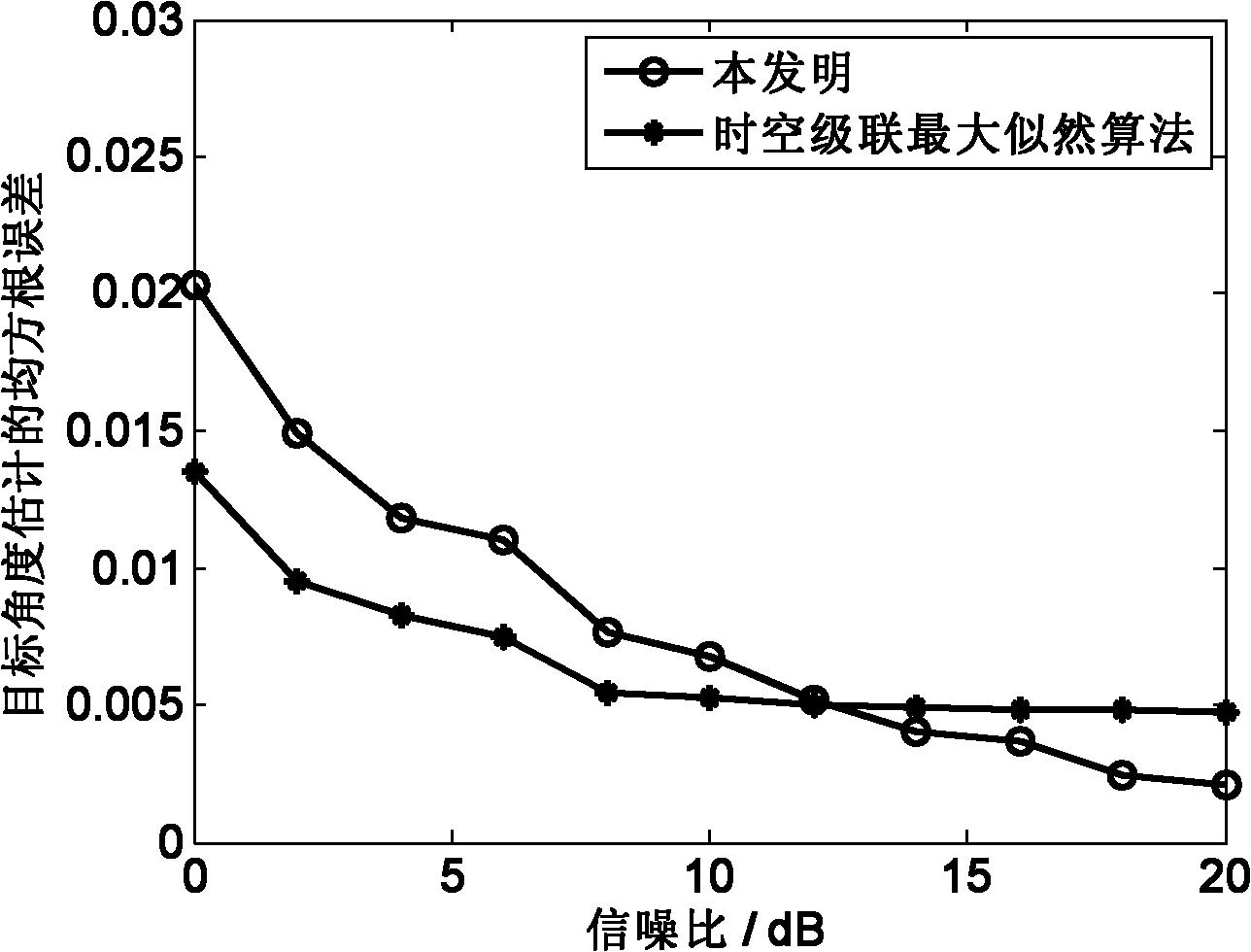Method for estimating direction of arrival of radar low-elevation target
A direction-of-arrival estimation and direction-of-arrival technology, which is applied in the radar field, can solve problems such as the inability to use direction-of-arrival estimation, relatively high signal-to-noise ratio requirements, and a large amount of calculation for angle search, so as to eliminate the amount of calculation and improve the signal Noise ratio, the effect of reducing the amount of calculation
- Summary
- Abstract
- Description
- Claims
- Application Information
AI Technical Summary
Problems solved by technology
Method used
Image
Examples
Embodiment Construction
[0032] refer to figure 1 , the multipath geometric model of the radar low-elevation target echo used in the present invention includes a vertically placed uniform line array antenna and a height h t , where the uniform linear array antenna is used as the receiving antenna of the radar, the number of array elements of the antenna is M, the distance between the array elements is d, and the center height of the antenna is h a , the straight-line distance between the target and the radar is R d , the distance from the target echo to the radar after being reflected by the ground (sea) surface is R s , the direction of arrival of the target and the direction of arrival of the multipath reflected wave are respectively θ d and θ s , assuming that the direction of arrival above the horizontal direction is the positive direction of the angle.
[0033] refer to figure 2 , the present invention combines figure 1 The multipath geometric model is used to estimate the direction of arr...
PUM
 Login to View More
Login to View More Abstract
Description
Claims
Application Information
 Login to View More
Login to View More - R&D
- Intellectual Property
- Life Sciences
- Materials
- Tech Scout
- Unparalleled Data Quality
- Higher Quality Content
- 60% Fewer Hallucinations
Browse by: Latest US Patents, China's latest patents, Technical Efficacy Thesaurus, Application Domain, Technology Topic, Popular Technical Reports.
© 2025 PatSnap. All rights reserved.Legal|Privacy policy|Modern Slavery Act Transparency Statement|Sitemap|About US| Contact US: help@patsnap.com



